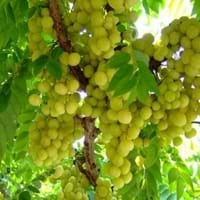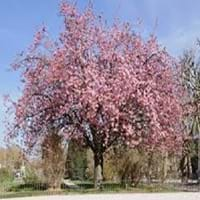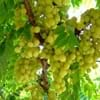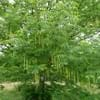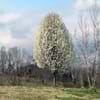Life Span
Perennial
Perennial
Origin
Not Available
China, Japan, Korea
Types
Not Available
Amanogawa , Shirotae , Shogetsu
Number of Varieties
Not Available
Habitat
Forests, gardens, Hill prairies, Homesteads, Rocky areas, Woodlands
Woodlands
USDA Hardiness Zone
Not Available
6-8
AHS Heat Zone
Not Available
9-4
Sunset Zone
Not Available
2b, 3a, 3b, 4, 5, 6, 7, 12, 14, 15, 16, 17, 18, 19, 20
Habit
Bushy, Evergreen
Arching/Fountain-shaped
Flower Color
Light Green, Lime Green
Pink
Flower Color Modifier
Not Available
Bicolor
Fruit Color
Green, Light Green
Not Available
Leaf Color in Spring
Yellow, Green, Gray Green
Green, Plum
Leaf Color in Summer
Light Green
Green
Leaf Color in Fall
Yellow, Green, Gray Green
Gold, Orange Red
Leaf Color in Winter
Yellow, Green, Gray Green
Not Available
Plant Season
Spring, Summer, Fall, Winter
Spring, Fall
Sunlight
Full Sun, Partial Sun, Partial shade
Full Sun, Partial Sun
Type of Soil
Loam, Sand
Clay, Loam, Sand
The pH of Soil
Acidic, Neutral, Alkaline
Acidic, Neutral
Soil Drainage
Well drained
Well drained
Bloom Time
Early Summer, Summer, Late Summer, Early Fall
Early Spring
Tolerances
Pollution, Salt, Soil Compaction
Not Available
Where to Plant?
Ground
Ground
How to Plant?
Seedlings, Stem Cutting, Stem Planting
Grafting, Stem Cutting
Plant Maintenance
Low
High
Watering Requirements
Keep ground moist, Requires regular watering, Use Mulches to help prevent water loss during hot and windy weather
Keep the ground moist but not water-logged
In Summer
Lots of watering
Lots of watering
In Spring
Moderate
Moderate
In Winter
Average Water
Average Water
Soil pH
Acidic, Neutral, Alkaline
Acidic, Neutral
Soil Type
Loam, Sand
Clay, Loam, Sand
Soil Drainage Capacity
Well drained
Well drained
Sun Exposure
Full Sun, Partial Sun, Partial shade
Full Sun, Partial Sun
Pruning
Cut or pinch the stems, Do not prune during shooting season, Remove deadheads
prune to control shape, Remove damaged leaves, Remove dead branches, Remove dead leaves
Fertilizers
High Potash Fertilizer
All-Purpose Liquid Fertilizer, slow-release fertilizers
Pests and Diseases
Bacterial Blight, Foliage-feeding caterpillars, Moth
Aphids, Bacterial leaf spot, Borers, Caterpillars, Scale insects, Spider mites
Plant Tolerance
Pollution, Salt and Soil Compaction
Drought
Flower Petal Number
Single
Double
Foliage Texture
Fine
Medium
Foliage Sheen
Matte
Glossy
Attracts
Caterpillar
Aphids, Birds, Not Available
Allergy
Skin irritation
Unknown
Aesthetic Uses
Not Used For Aesthetic Purpose
along a porch, deck or patio, Beautification, Cottage Garden, Wild gardens
Beauty Benefits
Blood purifying, Glowing Skin, Good for skin and hair, Provides herbal hair care, Speed hair growth
Not Available
Environmental Uses
Air purification, soil stabilisation
Air purification
Medicinal Uses
Atherosclerosis, Cancer, Diabetes, Diarrhea, High blood pressure, High cholestrol, Obesity, Vitamin C
anti viral, Anti-oxidant
Part of Plant Used
Fruits
Bark
Other Uses
Making Shampoo, Used for its medicinal properties, Used in herbal medicines
Grown for shade, Traditional medicine, Used for fragrance
Used As Indoor Plant
No
No
Used As Outdoor Plant
Yes
Yes
Garden Design
Cottage garden
Feature Plant, Shade Trees, Street Trees
Botanical Name
Phyllanthus acidus
PRUNUS serrulata 'Kwanzan'
Common Name
Tahitian gooseberry, country gooseberry, star gooseberry, starberry, grosella
Kwanzan Cherry
In Hindi
ताहितियन आमला
Kwanzan Cherry
In German
Tahitian Stachelbeere
Kwanzan Cherry
In French
Tahitian Gooseberry
Kwanzan Cherry
In Spanish
Tahitian grosella espinosa
Kwanzan Cherry
In Greek
Tahitian Φραγκοστάφυλο
Kwanzan Cherry
In Portuguese
Tahitian Gooseberry
Árvore de cereja
In Polish
Tahitian agrest
Wiśnia drzewa
In Latin
Tahitian Gooseberry
Kwanzan Cherry
Phylum
Magnoliophyta
Angiosperms
Class
Magnoliopsida
Magnoliopsida
Order
Malpighiales
Rosales
Family
Phyllanthaceae
Rosaceae
Clade
Angiosperms, Eudicots, Rosids
Eudicots
Tribe
Phyllantheae
Not Available
Subfamily
Not Available
Not Available
Number of Species
Not Available
Season and Care of Tahitian Gooseberry and Kwanzan Cherry
Season and care of Tahitian Gooseberry and Kwanzan Cherry is important to know. While considering everything about Tahitian Gooseberry and Kwanzan Cherry Care, growing season is an essential factor. Tahitian Gooseberry season is Spring, Summer, Fall and Winter and Kwanzan Cherry season is Spring, Summer, Fall and Winter. The type of soil for Tahitian Gooseberry is Loam, Sand and for Kwanzan Cherry is Clay, Loam, Sand while the PH of soil for Tahitian Gooseberry is Acidic, Neutral, Alkaline and for Kwanzan Cherry is Acidic, Neutral.
Tahitian Gooseberry and Kwanzan Cherry Physical Information
Tahitian Gooseberry and Kwanzan Cherry physical information is very important for comparison. Tahitian Gooseberry height is 800.00 cm and width 400.00 cm whereas Kwanzan Cherry height is 460.00 cm and width 460.00 cm. The color specification of Tahitian Gooseberry and Kwanzan Cherry are as follows:
Tahitian Gooseberry flower color: Light Green, Lime Green
Tahitian Gooseberry leaf color: Yellow, Green and Gray Green
Kwanzan Cherry flower color: Pink
- Kwanzan Cherry leaf color: Green and Plum
Care of Tahitian Gooseberry and Kwanzan Cherry
Care of Tahitian Gooseberry and Kwanzan Cherry include pruning, fertilizers, watering etc. Tahitian Gooseberry pruning is done Cut or pinch the stems, Do not prune during shooting season and Remove deadheads and Kwanzan Cherry pruning is done prune to control shape, Remove damaged leaves, Remove dead branches and Remove dead leaves. In summer Tahitian Gooseberry needs Lots of watering and in winter, it needs Average Water. Whereas, in summer Kwanzan Cherry needs Lots of watering and in winter, it needs Average Water.
